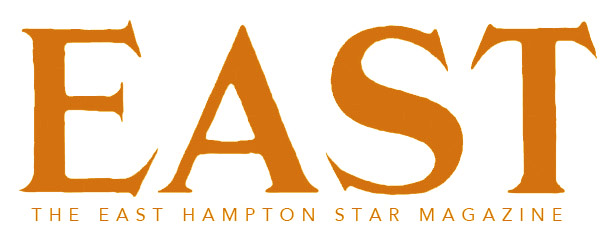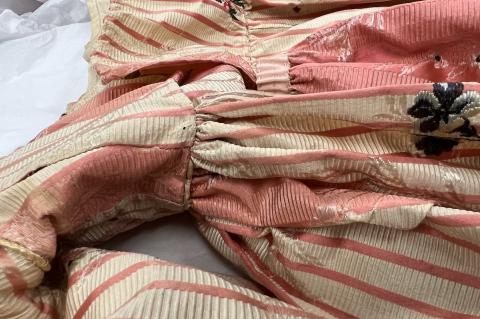Rare antique clothing and vintage fabrics require care and clever storage. Colette Gilbert picks up a few tips as she traces a thread between a Revolutionary War–era textile artist named Prudence Punderson and the contemporary couture house of Amy Zerner — revealing an East Hampton tradition of needlework and female artistry.
 The Best Salads of Summer 2022
The Best Salads of Summer 2022How do we want to eat this summer? Inspired by "Salad Freak," a cool new cookbook by Jess Damuck, a Shelter Island girl made good, our menu will be fresh, fast, fun (and full of folic acid!).
 DIVERSIONS: American Pastoral
DIVERSIONS: American PastoralAway from the bustle, on just under seven acres in a bucolic corner of Springs, is Duck Creek — the surprising little arts center doing big things.
 BOUNTY: Summer's Sweetest Pairing
BOUNTY: Summer's Sweetest PairingTwo beloved East End businesses have come together on a collaboration that is sure to be a very chill hit this summer: a specialty cinnamon-doughnut-spiked coffee ice cream, combining Dreesen’s Famous Donuts with John’s Drive-In’s ice cream.
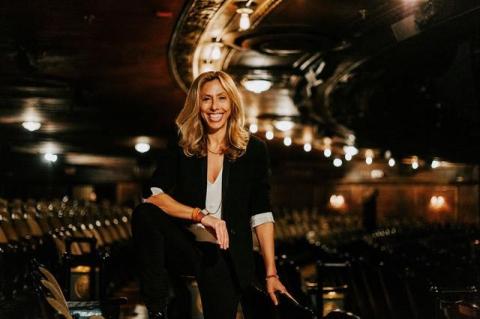 Neighbors: Funny Girl
Neighbors: Funny GirlAmanda Green, daughter of a legendary Broadway family and part-timer in Springs, has a hit of her own right now with "Mr. Saturday Night," starring Billy Crystal.
 Capture the Flag
Capture the FlagThere’s a room on the lower level of the Suffolk County Historical Society building that holds an artifact that was once revered in local history. On display here is an object made out of cloth, stitched by hand, and preserved, tightly pressed under glass. It measures 41.5 inches by 28.5 inches and consists of 13 white six-pointed stars on a blue canton, with seven bars of red and six white. It’s constructed out of homespun, a worsted wool, with the stars made out of cotton muslin. It is known as the Hulbert flag because it was found stashed in the rafters of a Bridgehampton barn that was owned long ago by a man named John Hulbert.
 That's the Spirit
That's the SpiritWhen you think of vodka’s origins, it’s likely what comes to mind is some hardscrabble Polish steppe or an inhospitable Siberian plain. After all, the word vodka comes from the Russian translation of water: voda. Certainly, an unlikely association of this distilled spirit’s provenance would be the verdant and eye-wateringly expensive village of Sagaponack.
 THE 600-YEAR PLAN
THE 600-YEAR PLANManoucher Yektai was stubborn about his aspirations.
From an early age he believed he possessed something of significance, something the world needed. He spoke of that belief all his life. It drove him as a youthful poet and inexperienced painter from tradition-bound Iran in the 1940s, and continued to animate him and provide powerful direction as he navigated the art worlds of Paris, New York, and eastern Long Island. His whole life was an endeavor to meet his colossal self-imposed expectations, and he presented no shortage of hubris when it came to his ability to do so.
 Make Mine a Mocktail
Make Mine a MocktailAs we look forward to being spirited away for the holidays, we might opt to skip the alcohol in our cocktails while we celebrate. Shaken or stirred, an aromatic mocktail will stimulate the senses with seasonal ingredients.
 Time to Make the Doughnuts
Time to Make the DoughnutsFor a Hanukkah sweet, we propose a homemade donut that touches on two traditions: beloved jelly-stuffed sufganiyot and the homespun crullers fried up in East Hampton kitchens since colonial days. Here, a recipe — and advice for fearful friers — adapted from an ORIGINAL column by Florence Fabricant published in The Star in 1975.
Last year, Robert Longo, like so many of his New York City peers, was a full-time resident in his weekend house here, improvising studio space in a basement, which he called “a storm of chaos,” while he waited to move into another house in Northwest.
In the midst of the pandemic, he was organizing “All for the Hall,” a benefit exhibition for Guild Hall, recruiting his friends to donate work and finding an eager artistic community ready to give back when it was so urgently needed.
 A Literary Prize on Sag Harbor's Waterfront
A Literary Prize on Sag Harbor's Waterfront“What a hell of a man a man could become,” John Steinbeck wrote in The Winter of Our Discontent, the novel that cemented the Nobel Prize committee’s decision to award him the 1962 Nobel Prize in Literature. Read between the lines and New Baytown, the book’s fictitious setting, starts to look a lot like Sag Harbor, where he lived while writing it.
 East Awards Best Taco
East Awards Best TacoTempers flare and face-slapping breaks out when East Enders’ conversation turns to egg sandwiches. We are committing a social crime tantamount to treason by suggesting what we’re about to suggest, but here we go.
Sorry, egg sandwich. You heard it here: the Morning Taco from Carissa's Bakery beats all.
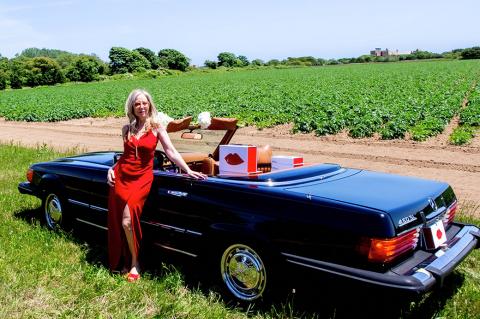 No Grass Ceiling Here
No Grass Ceiling HereSearch #womenofweed on Instagram and an image pops up that could, at first glance, be mistaken for teatime at grandma’s. Captioned “High Tea,” the photo is an explosion of pink: floral wall paper, delicate bone china, and blooming peonies scattered about. Look closely though and you’ll see there are other buds — dried and green — on the table, as well as a feminine hand holding a spliff.
 A Happening: Montauk's YOGA + SOUNDS + ART
A Happening: Montauk's YOGA + SOUNDS + ARTThe East End is chockablock with yoga classes, some led by legends you may recognize from the cover of Yoga Journal. We all have our favorites, and out of loyalty to the many don’t often choose to throw the spotlight on just one specific teacher or class. But we’re making an exception for YOGA + SOUNDS + ART, because it is less a yoga class than a happening. Yogini Ashley McGee runs the scene every Sunday morning at 10:45, through October.
Yoga class as a garden of delights — art and sitar, ocean air and CBD.
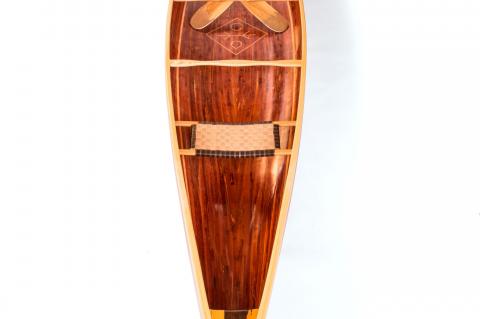 Object of Desire: A $100,000 Canoe
Object of Desire: A $100,000 CanoeUnlike fiberglass, unchanging and inert, wood flexes and moves, it must be cared for, and it is temporal, decaying ever so slowly with anything less than the best of care. Trent Preszler’s exceedingly limited-edition canoes deserve that sort of care. Each is built to order in his North Fork woodshop and takes about a year to complete, give or take.
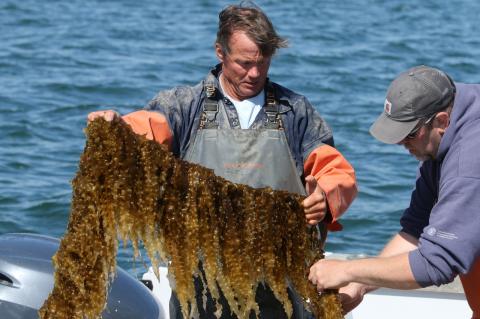 Wonder Weed
Wonder WeedSeaweed farming is the fastest growing aquaculture sector, according to the National Oceanic and Atmospheric Administration, and shellfish farmers, conservationists, East Hampton Town, and New York State are taking action. Companion bills in the State Senate and Assembly would permit kelp cultivation in underwater lands at Gardiner’s and Peconic Bays, and allow Suffolk County to lease underwater lands for that purpose.
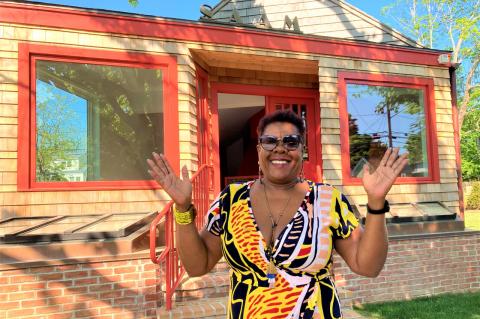 Memory Keeper: Brenda Simmons
Memory Keeper: Brenda SimmonsBrenda Simmons became a curator while working at Southampton Village Hall — commissioning school kids to create art for Black History Month. Now, she's the director of a new African American cultural museum.
 The Last Voyage
The Last VoyageFrom EAST magazine: An Excerpt From Amanda M. Fairbanks’s "The Lost Boys of Montauk: The True Story of the Wind Blown and the Four Men Who Vanished at Sea and the Survivors They Left Behind."
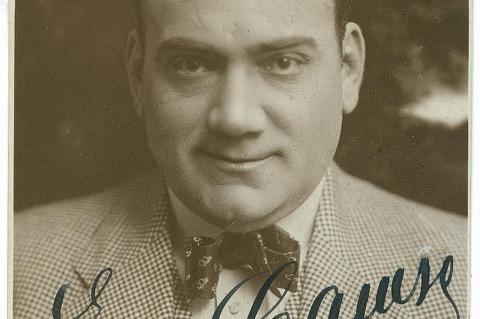 The Enrico Caruso Caper of 1920
The Enrico Caruso Caper of 1920Cat burglars stole $375K in jewels from the tenor’s house in 1920.
 My Life in a Cult
My Life in a CultEditor’s Note: To protect the identity and privacy of individuals the author knew when he was involved in the group in question, members’ names have been changed. East reached out to Sharon Gans and the School, but they declined to comment.
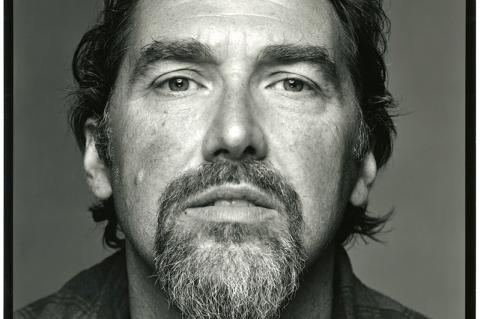 Taking Aim
Taking Aim Michael Combs was going to be a plumber, or perhaps work on a New York City tugboat, like his dad. He was learning plumbing in high school in the 1980s in Greenport, and a skill in the trades promised job security and income. He’d grown up among baymen, market gunners, and hunting guides — hunters, foragers, and fishermen, many of whom were also, by need and nature, artists: decoy-carvers, lure-makers, self-sufficient men and women who could fix or build most anything. Young Combs watched and learned.
 What Can I Do?
What Can I Do?An action list for every household on the East End. Because, duh!, it’s time to take personal responsibility for the climate emergency
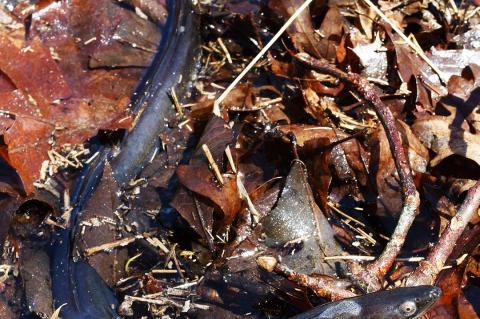 Let's Get Eel
Let's Get EelGigging (or spearfishing) — a primordial method for nabbing eels and all sorts of other briny creatures — requires no special skills and just a few basic pieces of equipment. David Gibbons tries his hand with Kerry Heffernan, the celebrated chef, as guide.
 Ayahuasca Moms
Ayahuasca MomsAs psychedelics gain scientific traction for their healing properties, enthusiasts are diving into enlightenment at weekend retreats by the beach. Sophie Griffin, a young writer, ran into tripping tourism on her spring break, and she had a few questions.
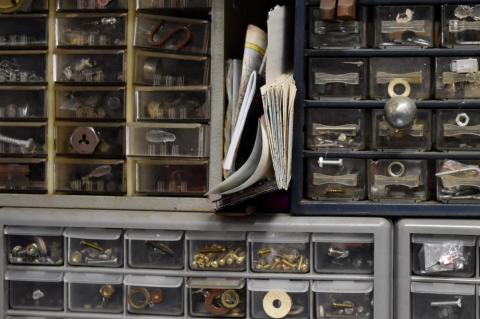 Mr. Fix It
Mr. Fix ItWhen was the last time you had something fixed? Reupholstered a chair? Brought a dress to be hemmed? Had an old stereo rewired? To someone born after 1985, these efforts can feel antiquated, effortful, slow. The kinds of chore we might think about but will never really get around to doing — like getting car tires rotated. We know we should, but it’s just not that pressing. Who has the time? And where would you even go?
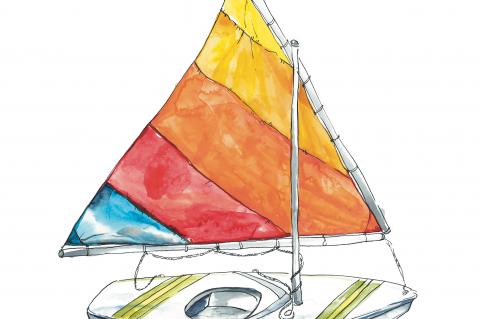 Summer Means Sunfish
Summer Means SunfishLet’s all raise a glass to the Sunfish, that nearly ubiquitous icon of the American shoreline, a single-sail fiberglass boat that has glided, bounced, carried young love, and, often, flipped across lakes, harbors, and bays since the early 1950s.
 The Town Paper
The Town PaperEast Hampton Village, 8:30 A.M. — Patricia ‘Pat’ Ryan makes her way down Dayton Lane, gently tugging on the thin red leash of her 14-year-old Cocker Spaniel, Lucy, who trots happily beside her. It’s a bright June morning and she is on her way to pick up a copy of The East Hampton Star, as he has every Thursday for almost fifty years.
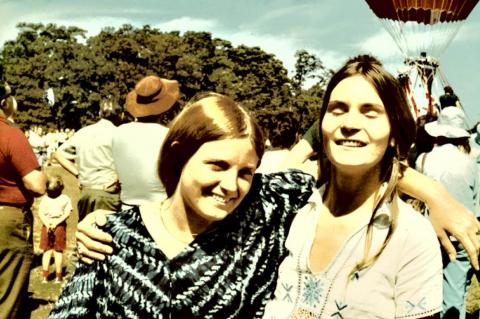 Up, Up, and Away
Up, Up, and AwayWhen a crowd gathers for the commencement of an event greater than itself, something like magic happens. The relighting of the old Sag Harbor Cinema sign this past Memorial Day weekend was such a moment. So was the clear April day in 2007 when onlookers lined Pantigo Road to watch several 18th-century buildings carried down the road on trucks to become East Hampton’s new Town Hall. These gatherings tend to evoke another era, when commemorations and celebrations were more abundant, from the moon landings to bicentennial parades of tall ships in harbors.
